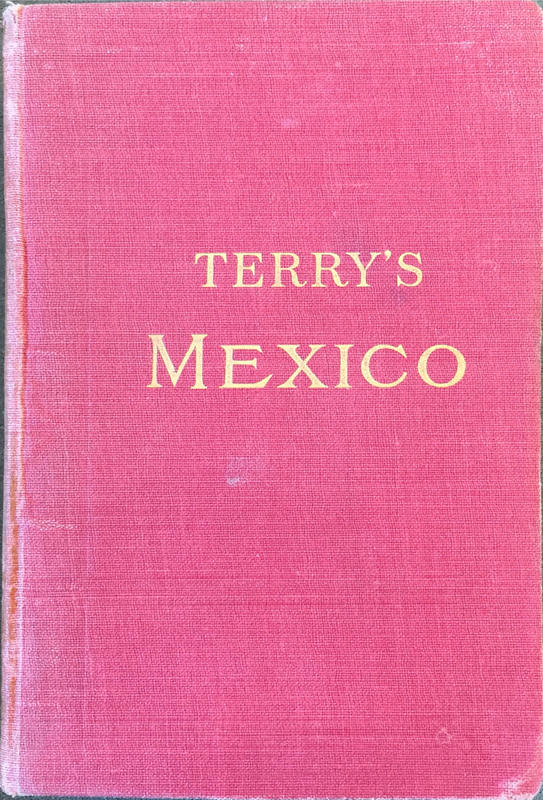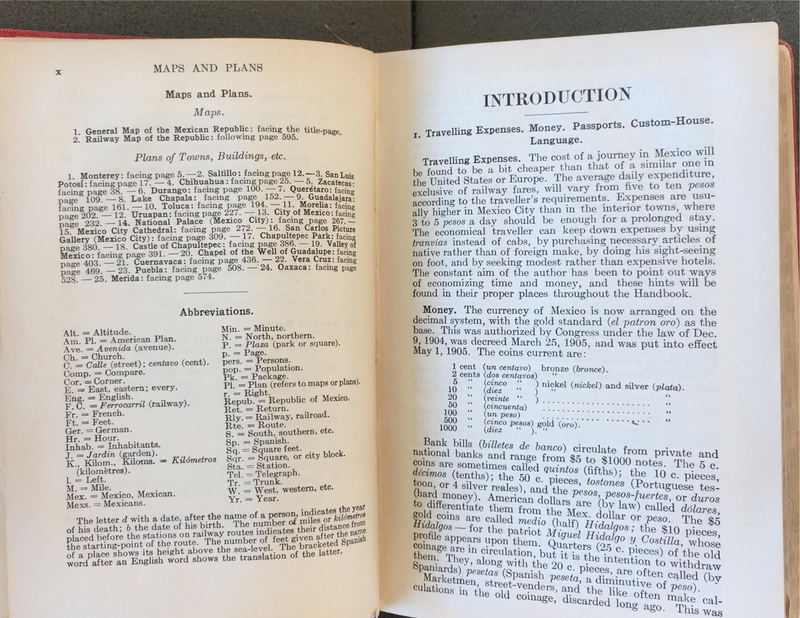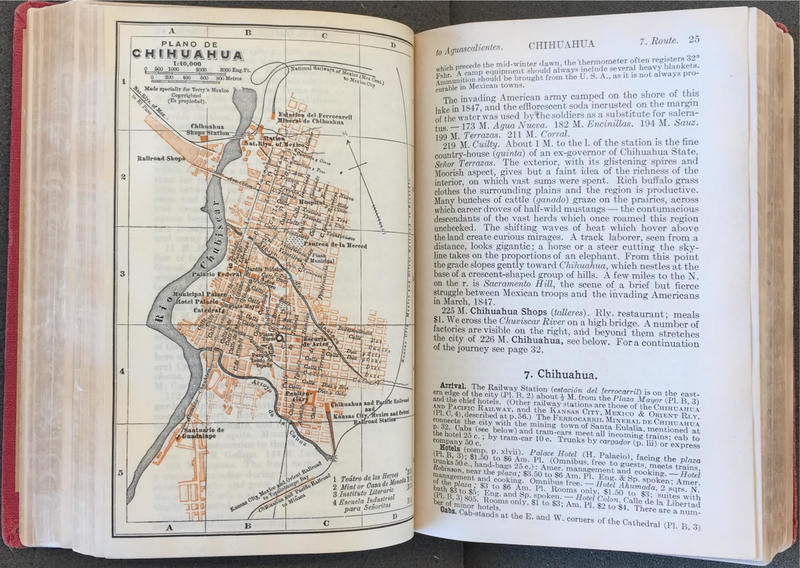Terry's Mexico
The Terry’s Mexico is a travel guidebook that offers us a glimpse into the Mexican national and cultural identities as presented by an American living in Mexico City for 12 years and what pre-WWI Americans expected as practical information of international experience. The condensed knowledge found in early guidebooks such as Terry’s represents the second conquest of Latin America: the invasion of the Capitalista-dores.
On the red fibrous cover of the bible-sized guide lays an impressive gold-plated title. This particular copy of the book looks like it has some considerable use. Some of the fibers of the linens are stringing off and there is discoloration in the red binding. The book contains maps in its pages. Although the last pages, including a map, are loosely folded into the text, disconnected from the spine. The introduction of the book includes a short pronunciation guide of Spanish phonetics and a description of the Spanish language as an object.
On page 18 of the introduction, for example, he writes “As an instrument of science and philosophy the Spanish is perhaps weak; but for poetic productions it is unrivaled, being at once harmonious, sonorous and precise, abounding in imagery and metaphor…”. Each chapter of Terry’s Guide is dedicated to a state in Mexico and follows a formula. There is a map of the state and some cities, a brief history, train time tables, hotels, and other points of interest to a tourist in a compact explanatory form. The Terry’s Guides were sold on trains by the Sonora News Company, likely to passengers on their way into Mexico. The condition of this book looks like it was carried around, as it was meant to be, potentially to supplement a traveler’s understanding of points of interest and locations presented in the state-specific chapters.
It is important to note the bias early 20th-century American capitalism places on Latin America in such guidebooks. English language travel information before the 1900s only came in the form of discursive, anecdotal narratives. The new encyclopedic guidebooks stylized foreign cultures in order to make them more palatable to sell to buyers of the book. The aesthetic typography of the text reflects as much about the subject culture as it does about touring culture itself. Guidebooks were exploitative of the culture they represent by presenting them as picturesque objects rather than the actual live-in cultures themselves by focusing on the economical way to navigate the country and not offering local testimonials. This is illustrated by Terry’s attempt to make the guide as “expedited and economical of a guide” as he can. Not only does the publisher have to sell the book itself, but they have to sell the idea of Latin America to their audience which is accomplished by displaying the exotic to the reader and downplaying all other aspects, including the individuality, of Latin American identity.
The world became smaller for North American adventurers as the tendrils of railroad networks in America grew and connected the states to its southern neighbor. Terry’s Mexico symbolizes the acceleration of tourism as an industry at the turn of the century, presenting Latin America as one of its finest, most exotic, and accessible merchandise. This implication presents the Latin American identity as nearly secondary, even subservient, to the natural beauty of the region’s landscapes for non-academic Americans at the time.
- Safa Tinaztepe
Works Cited
Braham, Persephone. "Adventures in the Picturesque: Voyage and Voyeurism in the Tourist Guidebook to Mexico." Revista Canadiense De Estudios Hispánicos 26, no. 3 (2002): 379-94. http://www.jstor.org/stable/27763778.
The Hispanic American Historical Review 8, no. 3 (1928): 421. doi:10.2307/2506174.
Wilgus, A. Curtis. World Affairs 98, no. 2 (1935): 104. http://www.jstor.org/stable/20662592.


